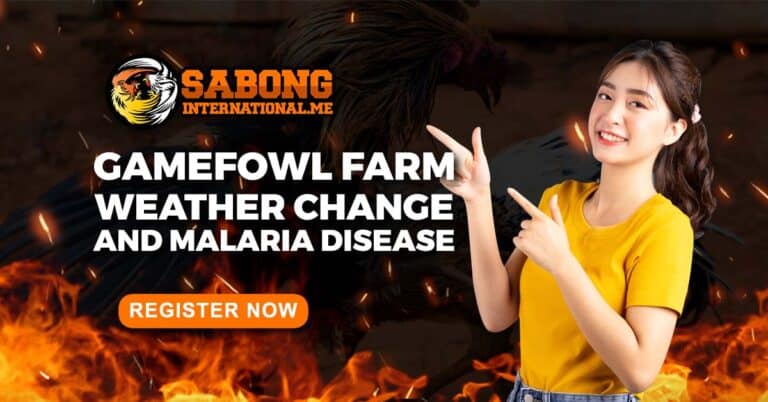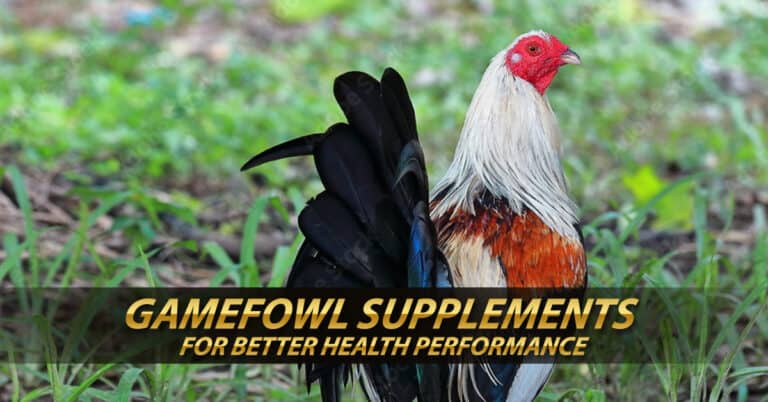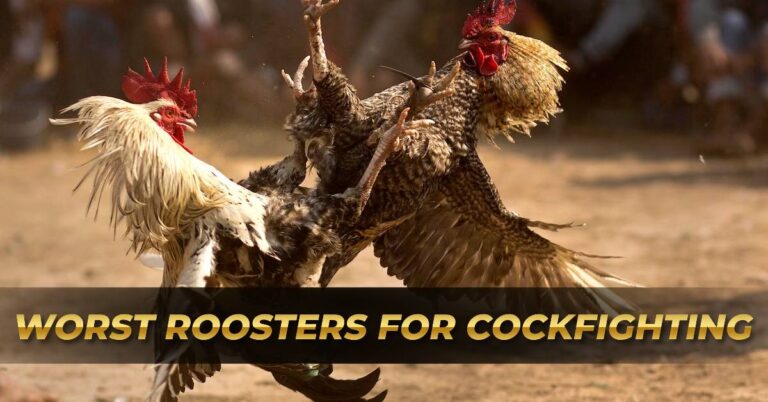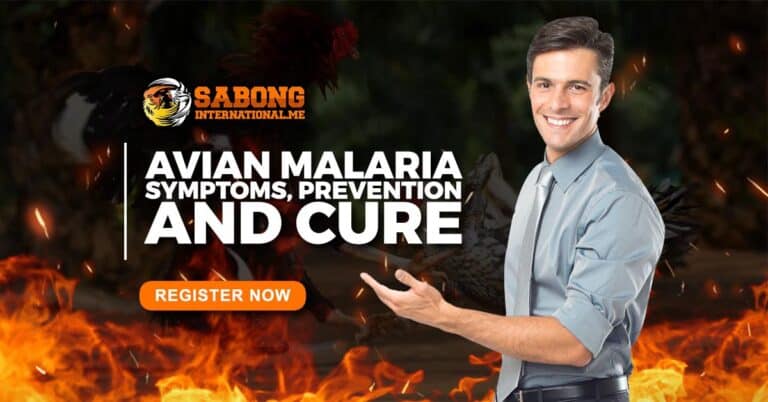Study The Different Gamefowl Parasites and How It Treats
Sabong International talks about Every animal carries parasites that have developed to live on or in particular species; each species has its kind of parasite that may or may not spend a little time on, let’s say, a human. Pathological parasites and benign parasites both exist. The goal of poultry keepers should be to maintain low levels of all parasites.
An increase in temperature is ideal for the growth of mites and lice. Imagine how these parasites, some of which are deadly, affect the chickens if the mere thought of creepy lice and biting mites makes you itch and tremble.

External Gamefowl Parasites
The term “parasite” refers to a creature that inhabits or is present in another organism (the “host”) to benefit from it at the expense of the host. Numerous external parasites prey on chickens by sucking blood or nibbling on their skin or feathers. It is challenging to avoid interaction with wild birds, notably English sparrows, and rodents that may harbor parasites that can infest poultry in small flocks. You should regularly inspect your flock for external parasites. A flock outbreak can be avoided by early detection.
Red Mite (Dermanyssus gallinae): When fed, this one-millimeter-long mite turns red.
The sickness can spread from hen to hen thanks to this small bloodsucker, which causes anemia in chickens. Given that it feeds on the blood of hens at night and is nocturnal, it is rather simple to catch if you know where to look. Around perch sockets and fractures in the woodwork, a whitish powder can occasionally be the only telltale sign of a crime, and eggs often have minute blood marks on their shells. Red mites spend the day in the hut and feed at night on the blood of the birds, which can lead to anemia, senility, and occasionally death in the birds. The gray and ravenous red mites can go for up to six months without eating.
Red mites thrive in areas where felt is present since they can crawl under it in the dreaded daylight and are nearly tough to eradicate without removing the felt from the ceiling of the henhouse. If it needs to be removed, either lay corrugated clear Perspex on top of the boarding in its place or swap it out for Onduline, a corrugated bitumen sheet that does not condense since it is heated. The red mites are prevented from reproducing there by the light. Due to the erratic nature of starlings and other wild birds, you can never be certain that you are clear of them. The only solution is vigilance.
You can see how a minor infestation can soon get out of hand given the red mite’s horrifyingly short life cycle, which lasts just 10 days from hatch to breeding, especially in warm weather. They can go weeks or even months without eating, so beware if you walk into an abandoned hen house and find yourself covered head to toe with tiny gray specks. These are starving red mites. When they run out of options, they will eat from you before returning to their usual red state.

Treatment
When the red mite doesn’t live on the bird, synthetic permethrin products that are approved for red mite use are quite helpful! The effectiveness of herbal control products does not seem to be constant. Some breeders dilute the chemical by adding flea powder to dust baths, which is probably ineffective. Blowlamp carefully into cracks to cure the hut organically. Use products that are authorized to spray inside the hut, or remove the roof felt and dust with flea powder containing pyrethrum.
Diatomaceous earth (DM), a contemporary substance, reduces the number of mites by drying out (desiccating) the exterior skeleton of insects when used year-round. The permitted full-strength DM must be purchased from agricultural merchants because pet shop products are frequently diluted and less effective.
(Ornithonyssus sylvarum) Northern Fowl Mite
The Northern Fowl Mite (NFM), which resembles the red mite in size and color but spends its whole life cycle on birds, quickly leads to anemia and causes death. Crested breeds are especially vulnerable to infestation, therefore if using pyrethrum-based powder to treat the mites, be sure to apply some down the ear canal where the mites like to hide. Cockerels tend to be more impacted than hens, although it is always worthwhile to inspect them as well. Infested birds have soiled-looking areas on them and are sad.

Treatment
Although DM can be administered to a chicken (no withdrawal period for eggs) if it has been infected, there are currently no licensed products to manage Northern Fowl mites.
The most often displayed birds are most at risk since the northern fowl mite is spread from hen to hen and is not as commonly carried by wild birds as the red mite. Most judges exclude birds that have Northern Fowl Mite, although some don’t even check for it. Anyone who exhibits birds should treat them both before and after the show as a matter of course because there is no justification for doing so. White birds are the easiest to see because their feathers take on a filthy tint. Although it can be found anywhere on the body, the area under the tail that is infected is the most frequent.
Menopon gallinae, a typical chicken louse
These may act as actual obstacles to mating. A fast tug will remove any eggs-bearing feathers, and louse management can be achieved by dusting with louse powder. However, if you simply throw the eggs and feathers on the ground, they will hatch and leap onto the next passing chicken. The chickens may look listless and their egg production may be affected by a severe infestation. Fall and winter are the worst months for infestations.
Treatment
Use DM or a licensed louse powder with pyrethrum as the active ingredient.
(Cnemidocoptes mutans) Scaly leg mite
By digging beneath the leg’s scales, the scaly leg mite produces mounds of white or pale yellow debris that are securely stuck to the leg, at first appearing as a whitish film. In severe situations, gangrene can develop when the crusts cut off the leg’s blood supply. The beginnings of the white crusts are visible on a bird with dark legs. The legs have a musty odor that reminds me of mice.

Organic control is done by dipping the legs into a wide-mouthed jar of surgical spirit once a week for three weeks, or by covering the legs in a thick layer of petroleum jelly, which prevents the mites from getting air to breathe but is messy. The hens should not be exposed to traditional medicines like creosote or diesel. Scales, like feathers, molt once a year, so badly infested legs may take a year to appear normal again after the crusts have fallen off (do not tear the crusts off as the flesh is raw below).
(Cnemidocoptes gallinae) Depluming mite
The feathers around the head and neck may occasionally fall out as a result of this, however, feather tugging is another reason for feather loss in this region. Use DM on the bird instead of loafe powder, which is ineffective against these mites.
putting on lice powder
One person may easily dust a bird by holding its legs between the fingers of their left hand (if they are right-handed), bearing the weight of the bird’s body on its palm and forearm, and turning the bird’s head beneath its arm. Holding the legs firmly in place, place the bird on its back on a table or the ground. Gently press your forearm against the bird’s chest. After that, you can use your right hand to dust the powder, paying special attention to the areas beneath the tail, under the wings, along the abdomen, then over the back and neck. Remember to put on gloves and/or wash your hands after.
Internal Gamefowl Parasites
An organism is considered a parasite when it inhabits or is attached to another creature (the host) to benefit from it at the expense of the host. Protozoa and worms are the two kinds of internal gamefowl parasites that harm chickens. Low infestation levels are typically unproblematic and do not require treatment. Unsparing behavior, inadequate development, feed conversion, decreased egg production, and, in severe cases, mortality are all clinical indicators of a parasite infestation. In addition, gamefowl parasites can exacerbate an existing disease condition or increase a flock’s susceptibility to infections.
Roundworms
Nematodes, or roundworms, are widespread in domesticated and wild birds. Roundworms of all sizes (Ascaris sp., also known as ascarids), small roundworms (Capillaria sp., commonly known as capillary worms or threadworms), and cecal worms (Heterakis gallinarum) are among the species that infest poultry. Roundworms can seriously harm the organ or organs they infest. The trachea (windpipe), eyes, and digestive tract are the most common areas affected by roundworms.

Large Roundworms
The most harmful worms that are prevalent in backyard flocks are large roundworms. An intense infestation may result in decreased food absorption, intestinal obstruction, and even death. Large roundworms can reach a length of 4-1/2 inches and are easily seen with the naked eye. They have a thickness similar to that of pencil lead. Sometimes they move up a hen’s reproductive tract and end up in an egg that is still forming.
Roundworms have a direct life cycle, meaning that their worm eggs are transferred from diseased birds’ droppings to birds who eat contaminated food, drink, or feces. Additionally, earwigs, grasshoppers, beetles, cockroaches, snails, slugs, earthworms, and other insects may collect worm eggs. They are known as intermediate hosts because they transport the eggs and then, when consumed by a bird, deliver the eggs to the bird. It is possible to avoid the worm infection of poultry by identifying and reducing the number of intermediary hosts that the birds come into contact with.
cecal worms
Most often, gamefowls have cecal worms. The ceca (two blind pouches at the intersection of the small and large intestines) is where they develop, as their name suggests. Even though cecal worms normally do not affect chickens, they can harbor Histomonas meleagridis, a protozoan parasite that causes histomoniasis (blackheads) in turkeys. By consuming earthworms that have consumed infected cecal worm eggs or chicken manure containing those eggs, turkeys can develop histomoniasis. So, even though cecal worms typically do not pose difficulties for hens, doing so is still crucial for the health of turkeys. Cecal worms can be successfully managed by levamisole. The use of the medication in poultry necessitates a veterinarian’s prescription.

Tapeworms
Another typical parasitic worm that harms gamefowl is the tapeworm. The small intestine of the bird can be home to these worms, which can reach lengths of 4 inches. If neglected, tapeworms can result in starvation, weight loss, and even death.
Infestation with tapeworms exhibits symptoms similar to those of roundworms. Take your gamefowl to the veterinarian right away if you think they may have tapeworms. The medication that the doctor will provide will destroy the worms and aid in your bird’s recovery.
Gapeworms
Gapeworms are a particular kind of parasitic worm that harms gamefowl’s respiratory system. If untreated, these worms in the trachea can impair breathing and ultimately result in death.
Coughing, gasping for breath, and trouble breathing are all signs of a gapeworm infection. You should take your gamefowl to the veterinarian right away if you think they may have gapeworms. The medication that the doctor will provide will destroy the worms and aid in your bird’s recovery.
Threadworms
Gamefowl ceca are impacted by threadworms, a particular kind of parasitic worm. If left untreated, these worms can result in mortality, weight loss, and diarrhea.
Similar signs of roundworm infestation can also be seen with threadworms. Take your gamefowl to the veterinarian as soon as you believe that they have threadworms. A drug that kills the worms and aids in your bird’s recovery will be recommended by the veterinarian.
Conclusion
As gamefowl breeders, we frequently struggle with the parasitic worms that infest gamefowl. The several kinds of parasitic worms that affect gamefowl must be understood, as must the potential treatments. The most prevalent parasitic worm species detected in gamefowl are roundworms, tapeworms, gapeworms, and threadworms. Take your gamefowl to the veterinarian right away if you think they may be affected by one of these worms.










